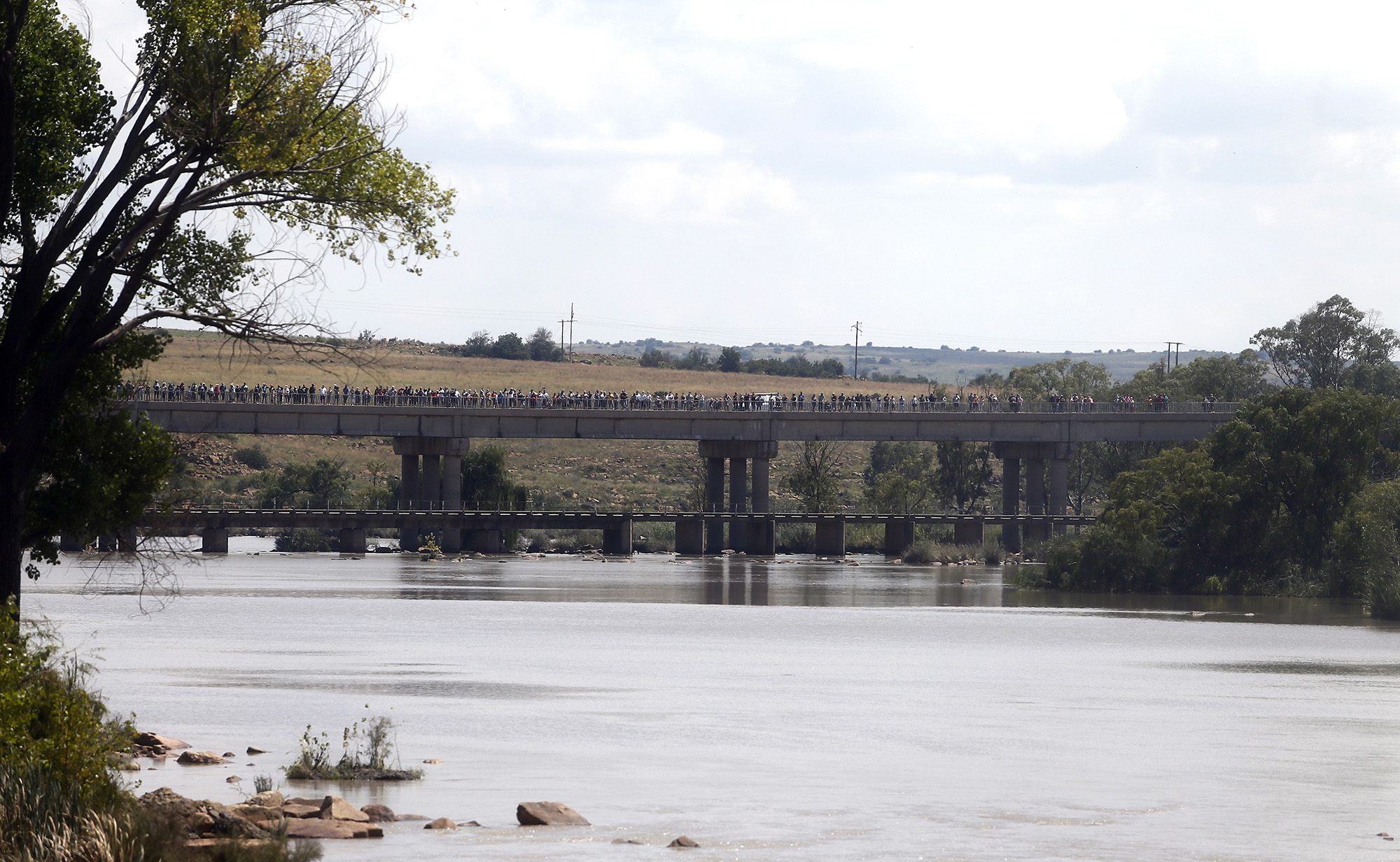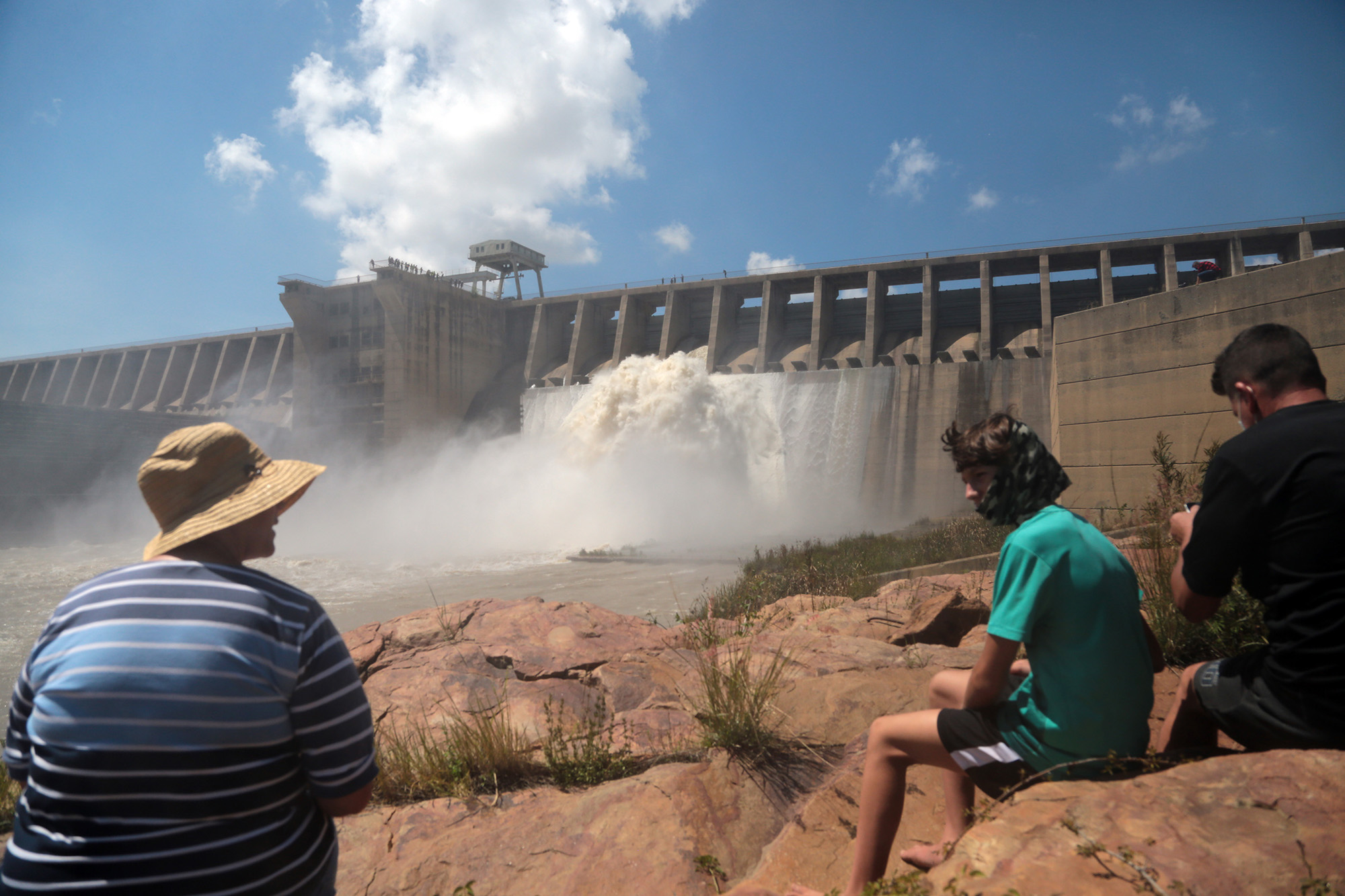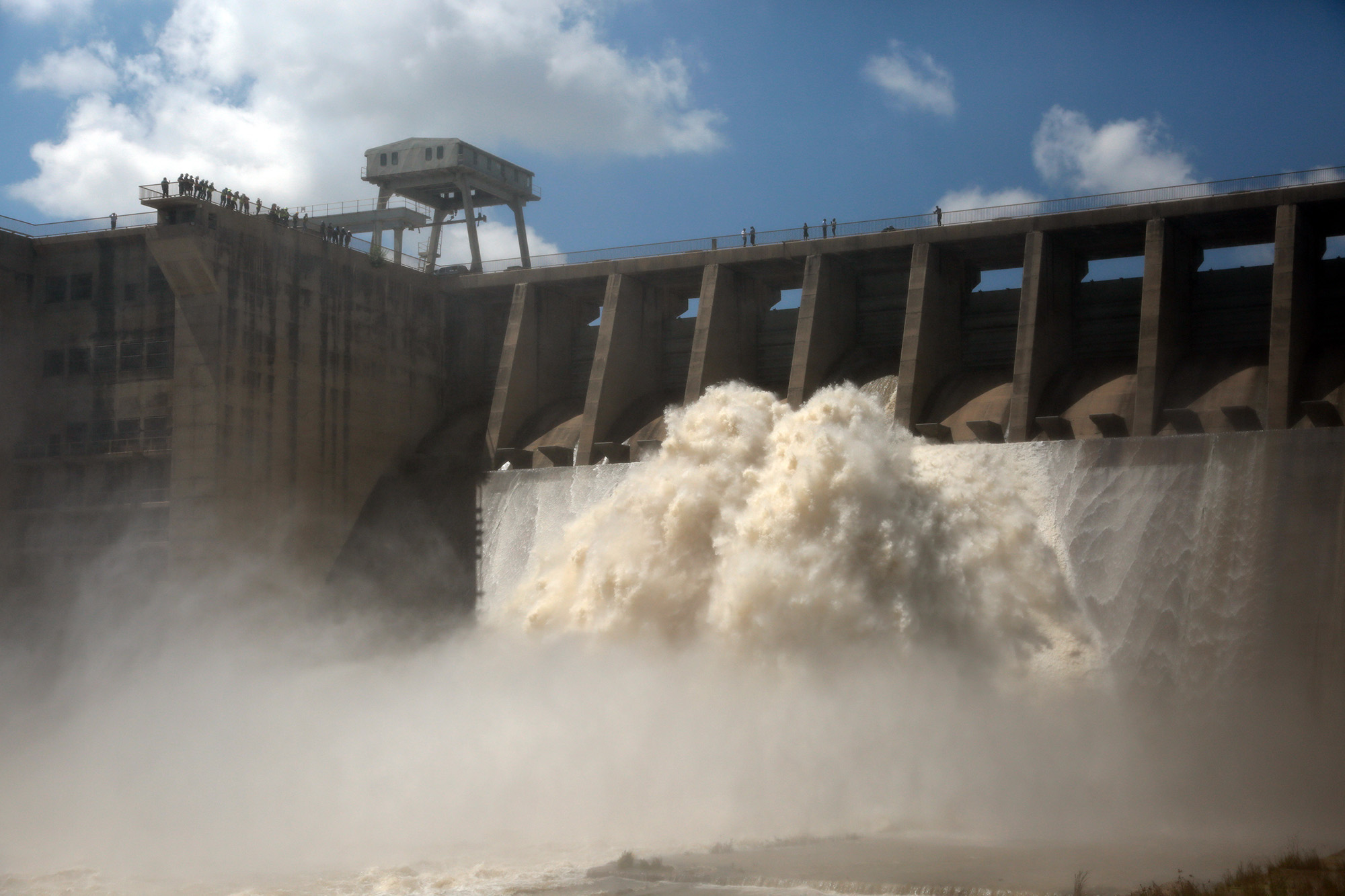Despite the devastation of Tropical Storm Eloise, heavy rains have brought relief to some of the country’s dams.
On Thursday, the Department of Water and Sanitation (DWS) opened three sluice gates to release water from the Vaal Dam, which had reached 106% capacity by that morning.
Crowds stopped on the side of the road to watch the gates open. While some took pictures, others marvelled at the torrent of water flowing through.
DWS spokesperson Sputnik Ratau said water was released to mitigate river flows from the Upper Vaal, which were rapidly filling the dam.
“... any further rapid inflows, especially as current indications are concerned with regard to the developing system in the Mozambican Channel, with the likelihood of it delivering more rain in the Upper Vaal, have impressed upon the DWS hydrologists to relook at the management of the Vaal Dam in this way,” said Ratau.
 The Vaal Dam had already reached 100% capacity by late afternoon on Monday. Photo: Felix Dlangamandla/Daily Maverick
The Vaal Dam had already reached 100% capacity by late afternoon on Monday. Photo: Felix Dlangamandla/Daily Maverick
The Vaal Dam, which forms part of the Integrated Vaal River System (IVRS), had already reached 100% capacity by late afternoon on Monday, 8 February. This is the first time the dam has been full since 2017.
Gauteng, the Free State, North West and Mpumalanga depend on the IVRS, which has a network of 14 dams. It is crucial for the economic hub of Gauteng and supplies water to key industries such as Sasol and Eskom.
Daily Maverick previously reported the dam was 79.8% full in the first week of February. A year ago it was a mere 57%.
This follows Tropical Storm Eloise which made its way from Mozambique and in late January struck north-eastern provinces in South Africa, including Mpumalanga, Limpopo and some parts of KwaZulu-Natal, destroying homes and infrastructure and leaving more than a dozen people dead.
 The opening of the sluice gates drew a crowd on Thursday. Photo: Felix Dlangamandla/Daily Maverick
The opening of the sluice gates drew a crowd on Thursday. Photo: Felix Dlangamandla/Daily Maverick
Now, heavy rainfall has seen the county’s average dam levels rise from 62.1% at this time last year to about 88%.
Dams such as Bloemhof, which borders North West and the Free State, reached 110% capacity on Wednesday. Last week, the Gariep Dam was 112.9% full.
Ratau told Daily Maverick that concerns that additional water pressure would cause the dam to collapse were unfounded.
“When we prepare to build a dam, part of what gets into the design is an allowance for even more water than the dam can accommodate.”
In the case of the Vaal Dam it was an additional 20% to 26%.
“We are still well within the capacity”. DM




 The opening of the sluice gates drew a crowd on Thursday. Photo:Felix Dlangamandla/Daily Maverick
The opening of the sluice gates drew a crowd on Thursday. Photo:Felix Dlangamandla/Daily Maverick